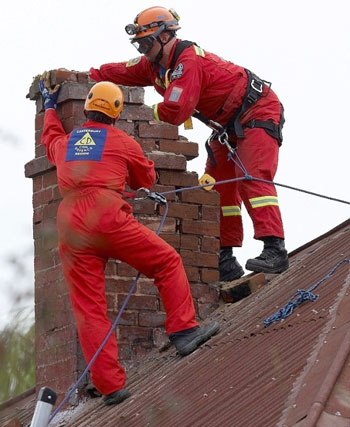Story summary
History of civil defence
Early New Zealand communities had to fend for themselves in emergencies. Organised civil defence had its origins in the Emergency Precautions Scheme, set up to deal with possible air raids and poison-gas attacks during the Second World War.
In the 1950s and early 1960s people worried about nuclear attack. A law was passed allowing local authorities to organise rescue and welfare services, and the Ministry of Civil Defence was set up in 1959. Later it became clear that natural hazards such as floods and earthquakes were more of a danger.
Civil defence plans for local authorities were made compulsory after the severe storm that sank the Wahine ferry in 1968. Committees to co-ordinate emergency services were set up after a 1973 incident when Auckland residents were affected by toxic fumes from leaking storage drums. From 1983 disaster recovery co-ordinators managed remedial work after disasters, which included major floods, the 1987 Bay of Plenty earthquake and Cyclone Bola in 1988. The Ministry of Civil Defence and Emergency Management was set up in 1999.
National and local civil defence organisations have often been criticised for inefficiency.
Civil defence in the 2000s
From 2002 regional Civil Defence Emergency Management (CDEM) groups were set up, along with emergency and welfare services and necessary utilities such as power companies. Groups had to make plans based on the region’s risks.
The National Crisis Management Centre is located underground at Parliament, and is designed to survive a major earthquake.
Civil defence systems were tested by the major earthquakes of 2010, 2011 (when a state of national emergency was declared) and 2016, and the Port Hills fires of 2017.
In 2019 the Ministry of Civil Defence and Emergency Management was replaced by a National Emergency Management Agency based in the Department of the Prime Minister and Cabinet.
States of national emergency were declared in March 2020, during the early stages of the COVID-19 pandemic, and in February 2023 during Cyclone Gabrielle.
Community involvement
People are encouraged to prepare for emergencies by storing water and food, organising emergency kits and making plans. In some areas people can subscribe to a text alert system for disaster information.
In an emergency, people may go to a community civil defence centre. These are based in schools, community centres and marae, and are run by volunteers.
Volunteers can also take part in Urban Search and Rescue (USAR), which finds and rescues people trapped in collapsed buildings or landslides.
Civil defence exercises have been run since the 1960s to test responses to disaster scenarios.





